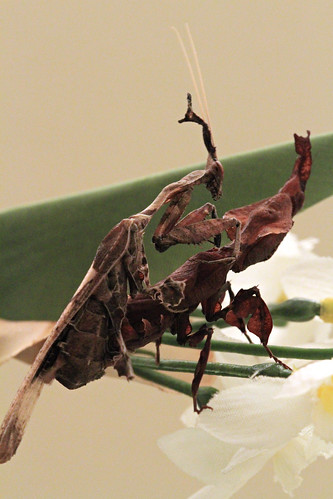congrats on the new camera!!!
As for me, I forced myself to use Manual mode as soon as I got the camera. Anyone serious about taking macro shots should be using M mode. M-mode is what makes DSLR's so great, its all about
full control.
Becky, I suggest if nothing else to take the camera outside switch it to manual mode and experiment. Note how changing the F-stop and shutter speed and ISO change the amount of light the camera captures, noise outputs, DOF (depth of field), and camera shake.
just as a FYI:
ISO: As a general rule of thumb, you want the lowest ISO possible (iso 100 is the lowest your camera can go to). To read in depth about ISO google it. Sometimes you must "crank up" the iso to get a proper exposure (so the image is not black (underexposed)/white (overexposed)) though, like what Kamikiri did here.
F-stop determines how much light the lens lets reach the camera's sensor. It opens/closes the aperture of the lens by incremental steps (f/4.5, f/5, f/5.6, f/6.3, f/7.1, f/8, etc.). The larger the # (i.e. F/11) the less bright the image will be (so you must compensate with a slower shutter speed/higher ISO). Likewise the larger the # the more depth of field you get (this concept is essential for macro photography!). Depth of field being how much is in focus.
(also, do not go higher than F/16 as after that usually the image becomes soft)
Shutter speed: The key here is to get the fastest shutter speed you can manage with the available light as to not get any form of camera shake (also important in macro photography)
All in all the key is to find a happy medium where you have the lowest possible ISO, Fastest possible shutter speed, and largest F-stop number (not past f/16) with the image being properly exposed (not to dark (underexposed) and not to bright (overexposed)).
If you have any specific questions, please ask



















































